Tijuana, September 18. - Five complaints and 582 consecutive days with the beaches of Imperial Beach (San Diego County) closed due to high levels of fecal contamination, were necessary for Mexico and the United States to agree on how to process the 25 million daily gallons of sewage that Tijuana throws into the sea.
Tijuana's wastewater not only muddies the cold Pacific that both countries share in this part of the country, but also relations between neighbors. In February 2017, the city experienced atypical rains that collapsed one of the water collectors, the system that precedes the treatment process. A river of dirty water crept in and forced San Diego authorities to decree that the beaches were not suitable for surfing, a sport with many fans on the other side of the border.
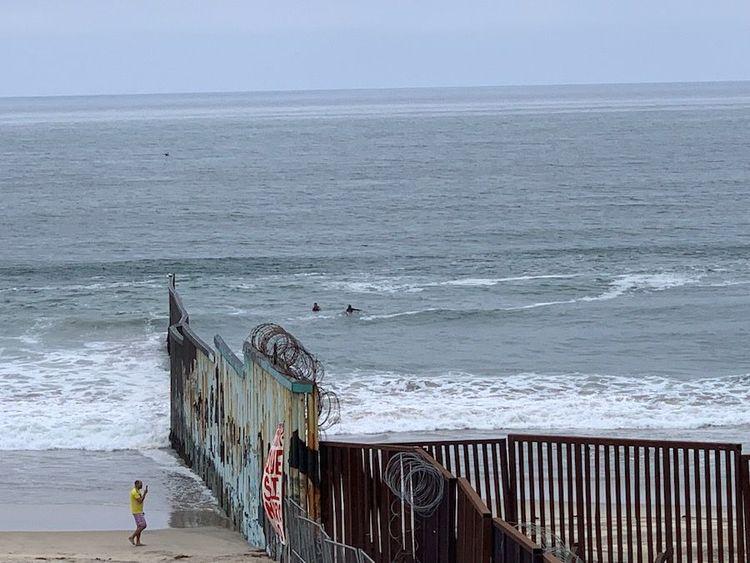
Photo: Juan Pablo Guerra
The collapse was not reported in a timely manner to the American authorities through the International Boundary and Water Commission (CILA), and the incident caused the then mayor of Imperial Beach and well-known environmentalist and surfer, Serge Dedina, to publicly denounce the then PAN governor, Francisco Vega, for negligence. In addition to mobilizing his followers on social networks to insult the authorities of Baja California.
The pollution reaches the sea -mostly- through the Tijuana River, whose basin covers an area of 4,430 kilometers, of which two-thirds are in Mexican territory and the last stretch in the United States. The basin consists of 27 sub-basins where the largest volume of wastewater is generated. Housing developers and irregular settlements use many of these canyons to vent their drains.
For 5 years, residents of the Playas de Tijuana delegation have been organized on social networks (they have a Facebook page and WhatsApp groups) to comment on the “unsustainable development” caused in the area by the increase in vertical construction and real estate developments, regardless of municipal development plans, new roads and basic services.
In the group “Let's Defend Playas de Tijuana” it is common to find images of irregular drains spilling their filth onto the beaches, including some houses that are located on the boardwalk. When residents file a complaint with the Tijuana city council, the answer is that “that” is the responsibility of Conagua and that they go with that agency.
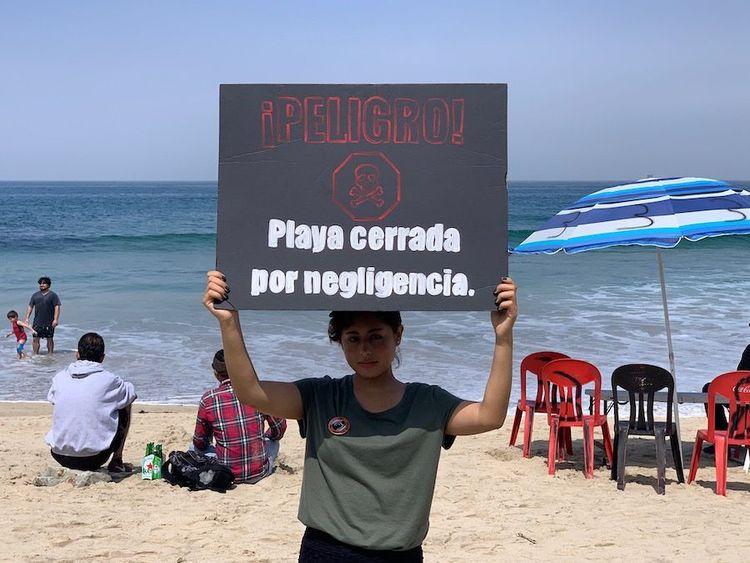
Photo: Juan Pablo Guerra
On an afternoon in August, Jacinto Bautistas, one of the neighbors who walks his dogs along the boardwalk of the Playas de Tijuana subdivision, discovers a new irregular drain and immediately sends a message to his group. He only gets one answer: “How terrible.” “Even we are getting used to living with sewage,” he hurts.
“The problems we see on this (Mexican) side are not only that the treatment plants don't work, there are also the 20,000 trickles (of sewage) that are on the coast and the runoff all over the city... all the trickles there are, plus everything that flows in the canal, is a lot of dirty water,” said Margarita Díaz, from the Border Environmental Education Project (PFEA).
According to a 2020 CILA report, demand for sewerage in Tijuana grew 1.7 percent annually and that year there was already a 12 percent delay in providing the service. Nobody knew yet that the housing boom was about to boil over last year. That report also details that 46 percent of the drainage network was obsolete.
By law, COEPRIS must measure pollution levels once a month. The unit of measurement is the amount of enterococci (bacteria that are regularly found in the human stomach and faeces). If it is detected that there are 200 or more enterococci per 100 milliliters of water, it indicates that wastewater was discharged into the sea, and the agency must make a preventive shutdown and share information to, among other things, alert users on both sides of the border. In Tijuana, it corresponds to the Clean Beaches Committee.
In the first four months of 2023, COEPRIS carried out only two studies, arguing that “the constant rains” in the municipality did not allow it for the rest of the months. The Clean Beaches Committee, in the words of the mayor, Montserrat Caballero, “is a coffee table”. This illustrates its effectiveness.
This intergovernmental committee - because it also participates in civil society - was formalized in 2003, but it was not until 2011 that an attempt was made to homogenize work in the country. It is headed by the municipal president; as representatives of the federal government there is the National Water Commission (Conagua) in the role of technical secretariat and the Secretariat of Environment and Natural Resources, as well as the Federal Attorney's Office for Environmental Protection, Secretariat of the Navy, Secretariat of Tourism, and others participate as authorities responsible for safeguarding the coasts.
In the case of the state of Baja California, they must be in charge of the State Public Services Commission of that municipality, together with the Secretary for Water Management, Sanitation and Protection (Seproa), a recently created secretariat (dating from the administration of Jaime Bonilla). The person in charge of Seproa did not attend the two public “tables” of the Tijuana Clean Beaches Committee held so far in the state administration.
Before reaching the sea, sewage hits poor sectors of the city
A sewage river flows through the Alacrán Canyon and crosses until it reaches the Tijuana River estuary, in San Diego County. In that canyon, the community known as “Little Haiti” was created. Today there is not a single Haitian - they are all Central and South American - but one of the largest shelters for migrants in the country is being built: Ambassadors of Jesus.
The hostel has space for about 1,400 people in the context of mobility, some of whom began to report stomach and headache pain in early August. To get there, migrants have to jump on rocks, avoiding the stinking waste water that crosses near the ranch and school, on their way to the sea.
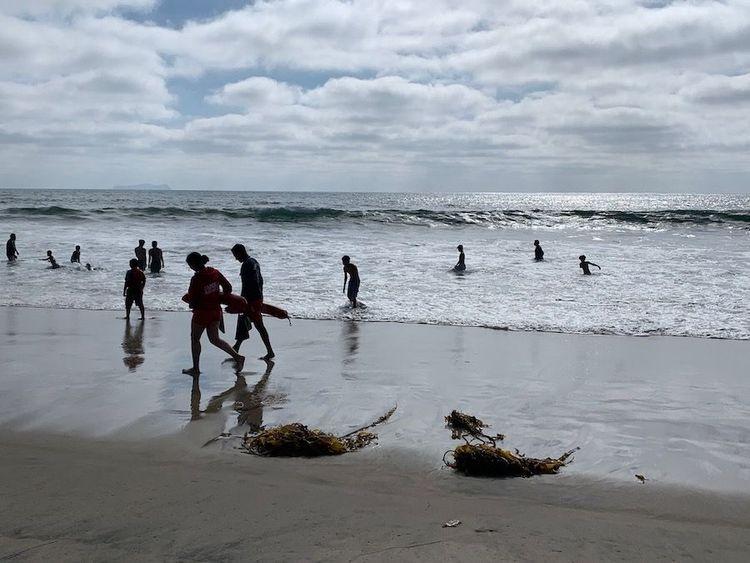
Photo: Juan Pablo Guerra
In early August, a piece of land was vacated and will be used for the construction of the Tijuana Elevated Viaduct (VET). The images show not only people recovering stoves and other household items, but a sewage river that flows through there, the Cortes Canyon, where they lived, attracted public attention. This is part of a system whose most visible part is the Slaughterhouse Canyon, a reference point for VET.
Negligence, the enemy of treatment plants
Tijuana, September 21. - 9 billion pesos will be allocated over a period of 5 years to restore the Tijuana water treatment system. In many cases, such as the San Antonio de Los Buenos plant, it is expected that the facilities will have to be modified almost from scratch, even though the city has nowhere to use the thousands of liters of purple water that will be available once the projects end in 2027.
“The San Antonio de los Buenos plant is not operating under optimal conditions. The treatment it gives to water is not adequate, it has practically not been operating as it should have been operating for more than 9 years,” acknowledged Víctor Daniel Amador Barragán, director of the Tijuana State Public Services Commission (CESPT).
This plant should properly process up to 800 liters per second, but this is not the case and the liquid is released into the sea through Punta Bandera beach, making it the largest drain in the city that goes out to sea.
Six kilometers from the place is “Playa Blanca”, in the past one of the most popular beach areas for building rest homes -close to Baja Malibu-, for many today it should be called “black water”. So far in 2023, in February, April and May, it was listed as the most polluted beach in the country. A PFEA report reported that in February it reached 10,462 enterococci per 100 milliliters of water, while in the other months it dropped to 4,950 enterococci per 100 milliliters, more than 200 times what is allowed so that people can enter these waters without suffering harm.
Precisely one morning in March, in a Facebook group of residents of Playas de Tijuana -where among many other things there are announcements regarding safety or sales- the image of a fishing boat moving a few kilometers from the Punta Bandera drain and several exclamations were published: Is anyone fishing here? Who would eat that fish! The media recovered the story, there was a brief stir on social networks, no authority took a position on the matter.
The fishing boat continued to appear in the following months. Have they spoken to the Navy yet? To Profepa? , some neighbors insisted. “None of their numbers work,” the group's administrator replied. When questioned on the subject, the municipal and state governments decided to answer that it was not up to them to the question of who fishes off the coast of Baja California.
The head of SEPROA, Armando Samaniego, reported that the Tijuana State Public Services Commission (CESPT) has paid around 40 million pesos annually to CONAGUA in the last 10 years as a fine for releasing contaminated water from its treatment plants that are not working properly.
Mexico and the United States share a wastewater treatment plant: PITAR (Tijuana-San Diego International Wastewater Treatment Plant), and according to the agreement it should process 1,100 liters per second, “about 25 million gallons, but it is actually receiving much more... it can work with up to 45 million gallons, coming from Mexico,” said the representative of the Mexican section of CILA.
Last May, the government of Baja California signed with the United States Environmental Protection Agency - as part of the “Green Bond” or 30-year loan granted to it by the North American Development Bank - a package of “actions to be certified” where they committed to investing 500 million dollars to clean up the 3,700 liters per second of wastewater that the municipality of Tijuana discharges into the Pacific Ocean.
Mexico will contribute 200 million and 300 million remaining to the north. On that occasion, the United States consul in Tijuana reported that they receive 25 million gallons of wastewater a day, which means 70 percent of what Tijuana produces. The fact is that, on the one hand, the sea currents that push water north don't help, but the large drain that the Tijuana River has become, has its estuary in San Diego.
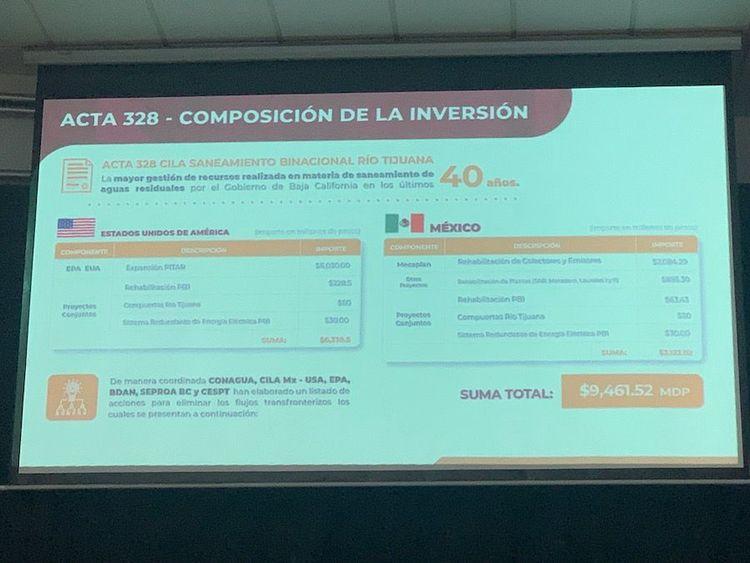
The division of expenditure between the United States and Mexico, in accordance with Act 328 of the CILA, for the repair of the entire treated water system. Photo: Juan Pablo Guerra.
The investment includes the expansion of the International Wastewater Treatment Plant (Pitar) located in Imperial Beach; to process 2,200 liters per second and would be ready in 2026; and according to CESPT estimates, the San Antonio de los Buenos plant will have to be rebuilt at a cost of 660 million pesos, and should be tendered before the end of the year.
The works to mitigate pollution, and the modernization of the pumping plants, Matadero, Laureles1 and Laureles2, the revision of collectors and pipes to bring wastewater from the city to the plants, and thus prevent it from flowing through the river and canyons, will not be completed before 2028, in accordance with the CESPT work program.
“If the point of comparison is of any use to you, when I joined CILA 37 years ago, we were in a situation very similar to that of now, and a comprehensive drinking water and sewerage project was carried out... it lasted approximately 30 years relatively normally, there are always specific problems, but on a large scale as they now happen every 30 years, this investment proposed by the two governments, the rehabilitation will be for a useful life of 25 years,” said Roberto Espinoza.
And what will be done with the processed water? - in a city that has no water, it comes from the Colorado River, through a 200-kilometer aqueduct and a very expensive pumping system because it crosses La Rumorosa-. He will throw it into the sea, only now cleaner because Baja California has no way of storing it once treated. “First we're going to clean it and then we'll see how we reuse it,” said the head of CESPT.
Contaminated or not, Tijuana's beach is the only recreational space for some
On weekends, families from the eastern part of the city - which is home to popular neighborhoods - cross old Tijuana to reach the beaches. The coolers, the folding chairs and even the umbrella come down from the old “chocolate” car. The residents of Playas - as everyone says in the subdivision of the city that is next to the coast - are used to a routine that leads them to spend their days near the sea, walking dogs, running or cycling in the area.
Displaced people from other states of the country also come to the beach. “It's very strange, but when I come to see the sea I feel close to my house,” says a woman from Michoacán who abandoned everything, fleeing violence. Regardless, even though some signs alert them to contamination, many continue to gather in the sand.
“We campaigned, (placed) advertisements right there on the beach, in the media and I can't coerce people not to go to the beach, right now with the elements I have, with the fires, with the landslides... my staff is too small to be coercing every citizen not to enter the beach,” said the mayor when, in the middle of Holy Week, thousands of people were bathing in contaminated waters.
“If we wanted a stronger closure every time there are high levels of pollution; a more definitive closure like the one in Ensenada, a mesh was installed and signs were put up and there were police patrolling,” said Margarita Díaz.
The image of a sea divided - if that's possible - by metal bars is perhaps the most striking in the city. Hundreds of people congregate there, near the small lighthouse, sometimes just to watch the day go by. Two men sit a few meters from the border wall (aquatic version) and place a rose in the sand. They are truckers who came to Baja California to bring the stage for a music festival.
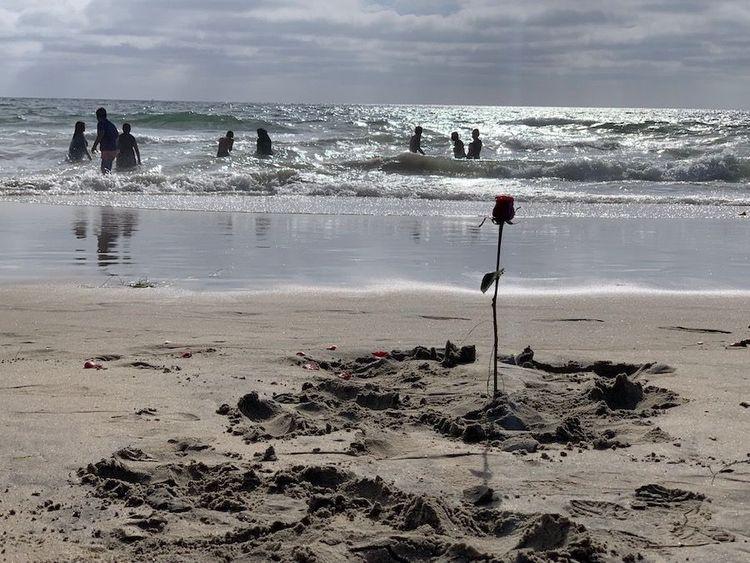
Photo: Juan Pablo Guerra.
The flower is the memory of a comrade who died in an accident months ago. Tijuana's beach “is like a home away from home,” says the one who seats the rose.
* This work was supported by the Maritime Journalism Network (Repemar), promoted by Causa Natura Media.



Comentarios (0)